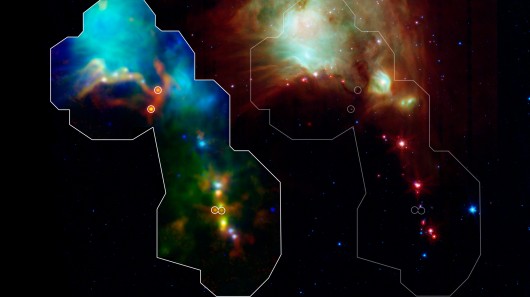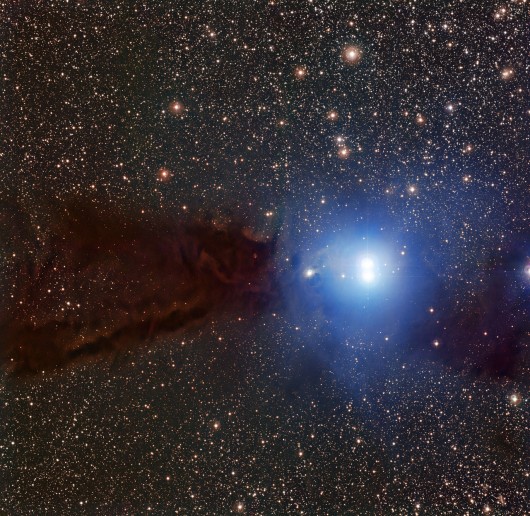Herschel space observatory detects some of the youngest stars ever seen
By Chris Wood
March 20, 2013

Astronomers have used the Herschel space observatory to detect a group of fledgling stars (image: NASA)
Observations made by the Herschel space observatory have revealed 15 protostars in the constellation Orion, the biggest star formation area near our own solar system. The observatory was the first telescope to reveal the grouping, with previous studies of the area missing the stars which are thought to be some of the youngest and coldest in the constellation. The discovery is a significant step in furthering our understanding of how stars form.
Protostars are notoriously difficult to detect, as they are often enveloped in clouds of dust and gas that form the building blocks of their creation. Astronomers have previously studied the stellar nursery in the Orion Molecular Cloud Complex, but the large group of fledgling stars was missed until Herschel observed the region.
The observatory's Photodetector Array Camera and Spectrometer (PACS) instrument was used to collect far-infrared light at a length comparable to that of a human hair. These readings were then compared to earlier data collected by NASA's Spitzer Space Telescope, before being corroborated by radio wave observations from the Atacama Pathfinder Experiment (APEX) telescope in Chile.
Protostars emerge from clouds of dust and gas such as the distant Lupus 3 (pictured) (image: ESO)
The discovery of such a large group of these young stars will allow scientists to study them in greater detail, furthering our understanding of the life cycle of stars. Detecting the protostars brings us another step closer to witnessing the actual formation of a star, an event that lasts just a few hundred thousand years.
Glenn Wahlgren, a Herschel program scientist at NASA, commented on the significance of the discovery, stating that the findings "add an important missing photo to the family album of stellar development.”
Eleven of the 15 stars exhibit a red color, indicating that they are still enveloped in the dust clouds from which they formed, meaning that they are very young. Spitzer has previously observed a further seven stars in the region that share similar characteristics, bringing the total number of the youngest stars to 18. It is thought that protostars spend just 25,000 years in this early phase of development, making it extremely difficult find observable examples.
Source: NASA
Copyright © gizmag 2003 - 2013 To subscribe or visit go to: http://www.gizmag.com
